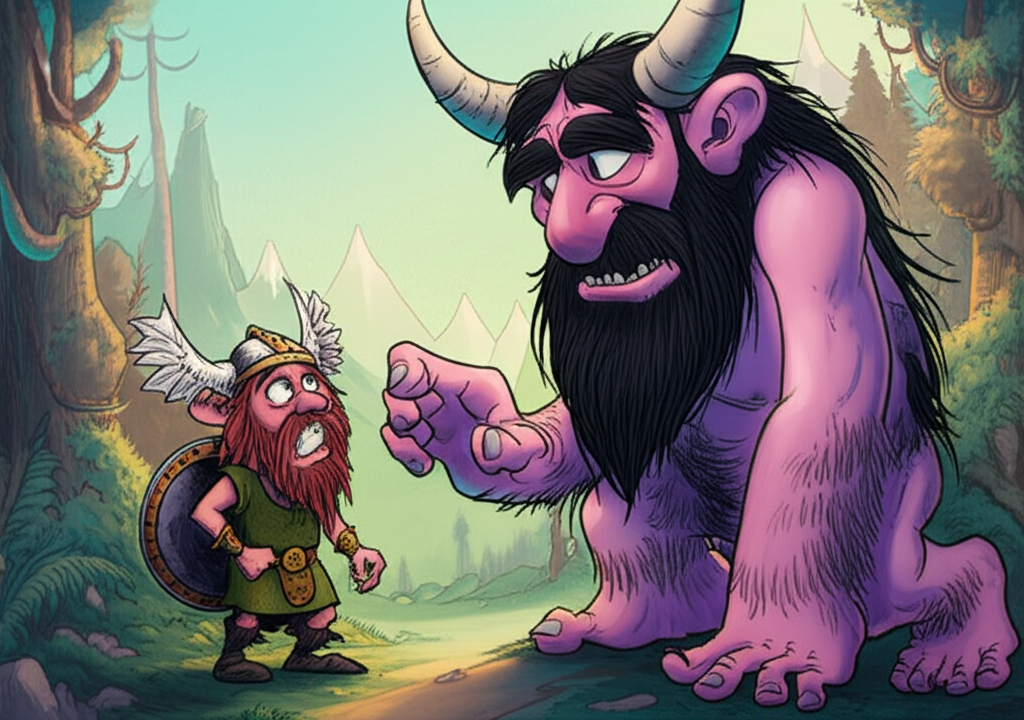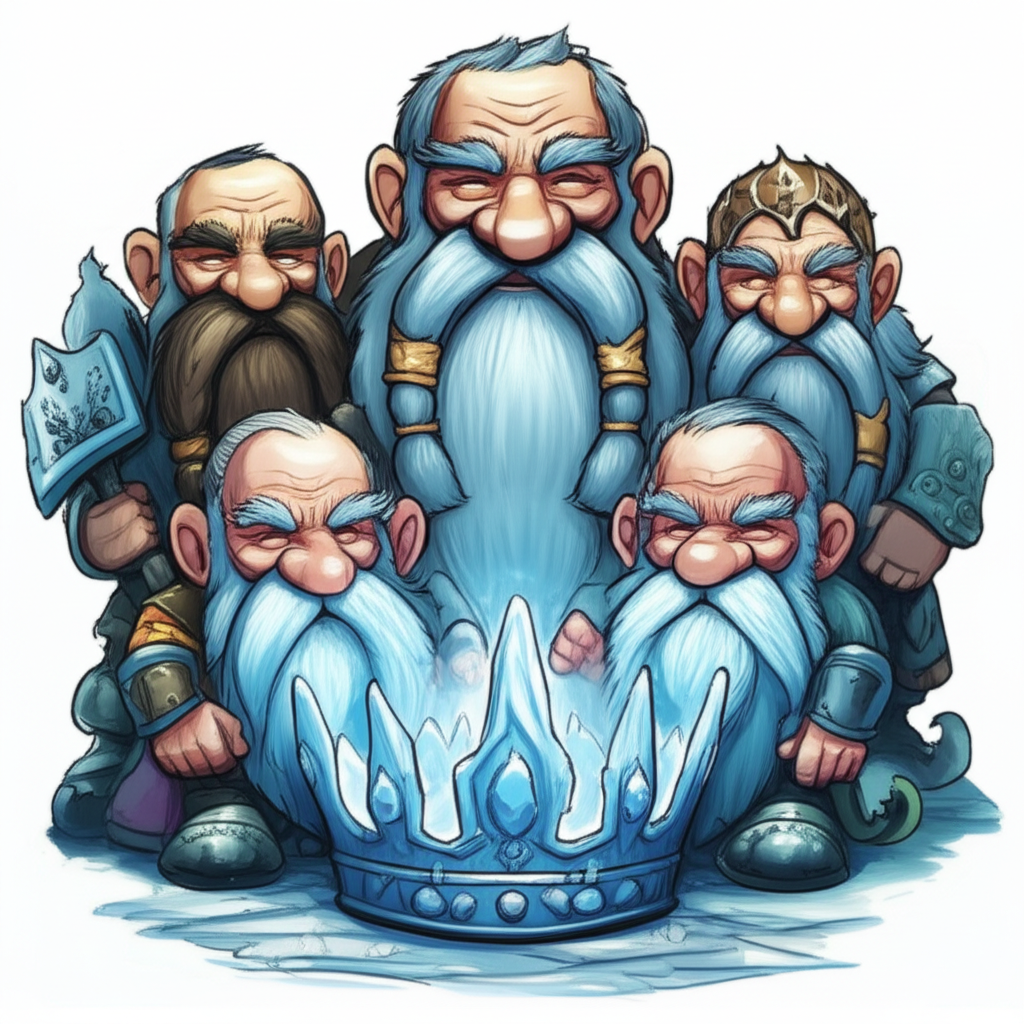
1. Introduction:
The tale of the Aesir-Vanir War and its aftermath is a cornerstone of Norse mythology, a rich tapestry of stories originating from the Germanic and Scandinavian peoples of the pre-Christian era. These narratives were passed down through generations, primarily through oral tradition, before being eventually written down in the Prose Edda and Poetic Edda during the medieval period. It is crucial to understand that these are stories, myths crafted by ancient people to explain the world around them, their fears, their hopes, and their understanding of the cosmos. This article delves into the aftermath of a pivotal conflict within this mythological framework, exploring its characters, narrative, symbolism, and its lasting impact on our understanding of this fascinating cultural heritage.
2. Origins and Cultural Background:
The Norse myths flourished in a society vastly different from our own. The Vikings, as they are often referred to, lived in a harsh, often unforgiving environment. Their lives were intrinsically linked to the sea, the land, and the cyclical seasons. Their world was populated not only by humans but also by a pantheon of gods and goddesses, giants, dwarves, elves, and a host of other creatures, all of whom interacted and influenced the fate of mortals.
This worldview was animistic, meaning they perceived a spiritual essence in everything. The forces of nature, the sun, the moon, the wind, and the sea, were all imbued with power and personality. This belief system was also deeply intertwined with a strong sense of fate, or wyrd. The actions of both gods and humans were seen as shaping their destinies, and courage, honor, and loyalty were highly prized. They believed in an afterlife, such as Valhalla for warriors who died in battle, and saw death as a transition, not an ending. This context is essential to understanding the stories; they were not just entertainment but a means of explaining their world, their place in it, and the forces that governed it.
3. Character / Creature Description: Hel and the Realm of Helheim
The realm of Helheim, ruled by the goddess Hel, is a crucial location in the aftermath of the Aesir-Vanir War. Hel, daughter of the trickster god Loki, is a being of complex symbolism. Her name, Hel, is also the name of her realm, and represents both the goddess and the place of the dead. She is often depicted as half-alive, half-dead, representing the transition between life and death. One side of her body is the color of living flesh, while the other is the color of decay.
Helheim itself is often described as a cold, dark, and bleak place, a realm of shadows and mist. It is not necessarily a place of punishment, as in later Christian conceptions of hell, but rather a final destination for those who did not die a glorious death in battle. It is a place of remembrance, where the souls of the deceased live on, a place of shadows and the inevitable.
4. Main Story / Narrative Retelling: The Treaty and the Aftermath
The Aesir and the Vanir, two powerful groups of deities, had been locked in a long and brutal war. The Aesir, the gods of war and order, ruled from Asgard. The Vanir, gods of fertility, magic, and wealth, resided in Vanaheim. The reasons for the conflict are varied, sometimes attributed to pride, power struggles, or simply a clash of ideologies. The war raged for years, causing immense suffering on both sides. Battles were fought across the Nine Realms, and neither faction could achieve a decisive victory.
Weary of the endless bloodshed, the gods eventually agreed to a truce. They met to negotiate peace, a precarious moment fraught with distrust and lingering animosity. As a symbol of their unity, the two groups decided to exchange hostages. The Aesir sent figures like Hoenir, a powerful but indecisive god, and Mimir, renowned for his wisdom. The Vanir, in turn, sent Njord, the god of the sea and wealth, and his children, Frey and Freya, the gods of fertility, love, and war.
The exchange was intended to foster trust and mutual understanding. However, the Aesir, unable to fully comprehend the Vanir’s ways, grew frustrated with Hoenir’s indecisiveness. They felt the Vanir had deceived them, leading to Mimir’s eventual beheading by the Aesir. The Vanir, in turn, accused the Aesir of treachery. This led to a simmering resentment between the two groups, and a renewed war nearly broke out.
Amidst this turmoil, the aftermath of the war had consequences for many realms, most notably in Helheim. The souls of those who died in battle, and those who perished in the conflict between the Aesir and Vanir, found their way to Helheim. Hel, as ruler, was tasked with welcoming these souls, a grim responsibility reflecting the somber reality of death and the end of life. The war, a testament to the gods’ limitations and the cyclical nature of conflict, left a lasting mark on the very fabric of the cosmos. Helheim, a realm of shadows, became a stark reminder of the battles fought, the sacrifices made, and the inescapable presence of death.
5. Symbolism and Meaning:
The Aesir-Vanir War and its aftermath are rich with symbolic meaning. The war itself could represent the struggle between order and chaos, between the structured world of the Aesir and the more fluid, natural world of the Vanir. The exchange of hostages can be seen as an attempt to find common ground, a recognition that cooperation and understanding are necessary for peace. However, the subsequent betrayal and Mimir’s death symbolize the difficulties of overcoming deep-seated animosities and the lingering impact of conflict.
Helheim, as a realm of the dead, represents the inevitable end of all things. It is a place of remembrance, where the deeds and lives of mortals are preserved, but also a place of shadows and cold, a stark contrast to the vibrant realms of the living. Hel’s role, as ruler of Helheim, reflects the goddess’s authority over death and the cycles of life and death, an important part of Norse cosmology. The war and its aftermath also highlight the limitations of even the gods, demonstrating that they are not immune to conflict, loss, and the consequences of their actions.
6. Modern Perspective:
The tales of the Aesir-Vanir War continue to captivate audiences today. They have been reinterpreted in countless ways, from high fantasy literature like The Lord of the Rings to blockbuster movies and video games. The characters and settings of Norse mythology provide fertile ground for artistic exploration. The themes of conflict, betrayal, peace, and the consequences of war resonate with modern audiences.
The stories are studied in academic settings, providing insights into the history, culture, and beliefs of the Norse people. The myths are examined to understand their symbolism, their moral messages, and their reflection of the human condition. They offer a window into a world of complex characters, epic battles, and profound themes that continue to inspire and intrigue.
7. Conclusion:
The Aesir-Vanir War and its aftermath is a powerful cultural narrative, a product of the imaginative minds of the Norse people. These are stories, not articles of faith, intended to explain their world and offer insight into the nature of existence.
As Muslims, we acknowledge that only Allah, the Most High, is the true Creator and Sustainer of all. We recognize that these stories, while captivating, are products of human imagination and a reflection of a different cultural context. We can appreciate the artistry and storytelling tradition of the Norse people, recognizing the value of understanding different cultures and their rich histories. These myths, however, do not alter our core belief in the one true God.
The legacy of the Aesir-Vanir War, the figure of Hel, and the concept of Helheim serves as a reminder of the power of storytelling and the enduring human fascination with mythology and cultural heritage. The tales provide a glimpse into the past and the importance of remembering and appreciating the diverse tapestry of human experience.





